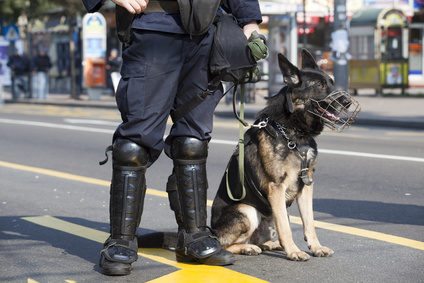There is a paucity of information about the number of people bitten annually by police canines in the United States. However, it is likely  that the number of individuals attacked by these kind of dogs is high based on the costs to municipalities to cover police dog bite claims.
that the number of individuals attacked by these kind of dogs is high based on the costs to municipalities to cover police dog bite claims.
For example, an indication of the high cost for these kinds of claims was discussed in a March, 2013 story in the Seattle Times. The newspaper reported that over $1 million in damages was paid to 17 plaintiffs in western Washington state during a five-year period. If one uses these statistics as a guideline for the United States, then it is likely that hundreds of people in the United States are attacked annually by police canines, and the cost in damages is millions of dollars.
Generally, police K-9 handlers tend to be defensive of their K-9 “partners”, and rarely acknowledge behavioral errors made by their dogs when deployed in field situations. Innocent bystanders are attacked, and the severity of injury inflicted to the victim of a police dog attack is generally greater when compared with the dog bite damage inflicted by a household pet. From a police canine behavior perspective, police canines become “predictably unpredictable” when deployed in field situations for subject apprehension.
What kind of behavioral errors happen when police patrol dogs are deployed in the field?
- First, because of their high state of aggressive arousal, police patrol dogs are prone to attack the first person they encounter when searching for a suspect. Moreover, frequently this turns out to be a non-suspect rather than the target suspect they were searching for.
- Second, errors happen because these kind of dogs are difficult to control. For example, once an attack starts on a suspect, a K-9 handler may have difficulty in getting the dog to immediately stop upon verbal command. Since the dog continues to attack despite being commanded otherwise, bodily injury to the victim is usually greater. Police canines are given hours of training to stop an attack when commanded to do so, but in a field situation this becomes motivationally difficult even for the best trained dog and the most experienced K-9 handler.
- Third, police departments often continue to use the same canine that has been involved in previously unwarranted attacks. Since the dog stays in service when it should have been removed, a few individual dogs are the ones disproportionately involved in attacks on non-suspects.
- Fourth, police departments continue to abide by the policy of training their dogs to “bite-and-hold”. Given the predictably unpredictable nature of police patrol dogs, and costly lawsuits that have ensued, some police departments have shifted to the policy of training their dogs to alert by barking, rather than biting, after finding a suspect.
Read more about police canines
- Animal behavior analysis of attacked trained police canines
- The nature of dog bite injury inflicted by police canines
- Dangerous nature of attack trained police dogs
- Civil rights police K-9 dog bite attack in San Diego California
- Police dog attack verdict: $222,000 awarded to California victim
- Police dog bite attack on innocent bystander settles for $225,000 in Washington
- Police dog bite statistics
- Vicious police dog bite attack rips man’s throat apart in Ontario, Canada
- Police dog bite attack on innocent bystanders
- Settlement in California on police dog bite attack that may have killed 89-year-old man
- Police dog trainer in North Carolina surprisingly calls police K-9 handlers “stupid”
- Police dog “bite-and-hold” technique leads to claim of excessive force and settlement of $145k in California
